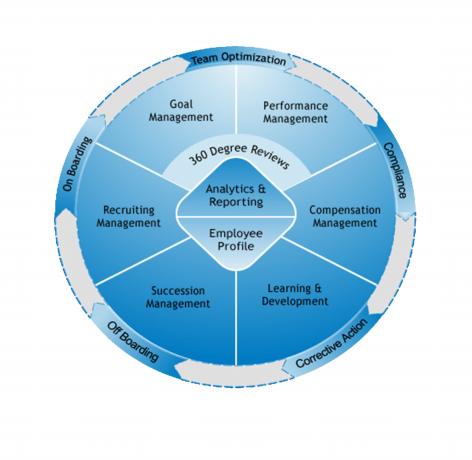SuccessFactors in HCM landgrab to bolster sales

Facing a shuddering halt in its hitherto fast-track growth trajectory, talent management vendor SuccessFactors will today launch an aggressive landgrab for territory currently dominated by conventional back-office human capital management (HCM) and enterprise resource planning (ERP) vendors.
SuccessFactors is best known for its goal-oriented performance and compensation management capabilities. Like most of the emerging new breed of SaaS-delivered talent management vendors, it has steered clear of the more transactional functions provided by mainstream HCM specialists and ERP vendors. This has allowed the newcomers to complement, rather than compete with, the established vendors. But that all changes today.
SuccessFactors' new 'Business Performance Accelerators' add functionality such as onboarding, offboarding and compliance that have traditionally been the preserve of the mainstream incumbents. And it doesn't stop there. Future announcements are likely to extend deeper into transactional HR such as benefits administration, VP of product marketing Rob Bernshteyn told me in a briefing yesterday. The new functions form the outer ring of the circle diagram shown below, while the components inside are the existing product set (picture courtesy of SuccessFactors).
It's no surprise to see SuccessFactors change tack so dramatically from its prior focus on ramping sales (at a dizzying rate) of its core talent management offering. The company's share price slumped last week after JMP Securities analyst Patrick Walravens forecast growth in 2009 would shrink to 26% from 46% in 2008, and said he believed the company had laid off as many as a quarter of its staff in the last few months (SuccessFactors aren't commenting on this report).
Faced with a more challenging sales environment, the new strategy gives SuccessFactors the opportunity to sell more to its existing customers, as well as counteracting the objections its salespeople are hearing from prospects. "Our customers want to partner with one human capital management vendor," Bernshteyn told me. "They're looking for a platform that's easy to use, that employees find pleasing to use ... and they want to do many of these things on one platform."
The company also believes it has a valuable asset in its focus on 'front-office' performance management rather than 'back-office' administration: "The richness of data on employees we have is greatly more valuable than what you have in the back-end," explained Bernshteyn. So as buyers pull in their horns and look to consolidate on a single vendor, SuccessFactors will be arguing that its data is more valuable and harder to export than what's stored on the back-office systems. "It's more likely people are going to move over to us," says Bernshteyn.
Had the good times remained, I suspect today's announcement would have seen SuccessFactors launch a Force.com-style platform-as-a-service (PaaS) offering that would have allowed third parties to build out functionality on its core platform. SuccessFactors will still announce today that it has moved to a PaaS environment based on a core 'web component engine' architecture — but it won't be exposing it to third-party developers. Instead, its own developers have been able to use the platform to quickly churn out new functionality that customers have voted for in its IdeaFactory community. Bernshteyn told me that the company has looked at other PaaS platforms such as Coghead and observed that "very few of the applications that are built actually get used." No doubt the thinking is that third parties will be even less willing to indulge in such speculative application development now that the economy has gone sour, and besides, SuccessFactors is in too much of a hurry to wait on others.
The impact of the downturn is also evident in the new functionality introduced today: offboarding is handy for businesses that are making reductions-in-force; disciplinary tracking gives you a paper trail you can produce in case leavers sue you for unfair dismissal; you can implement performance improvement plans to make sure poor performers either buckle down or face dismissal; even the new on-boarding process can help after a reduction-in-force to get redeployed staff back up to speed as quickly as possible.
